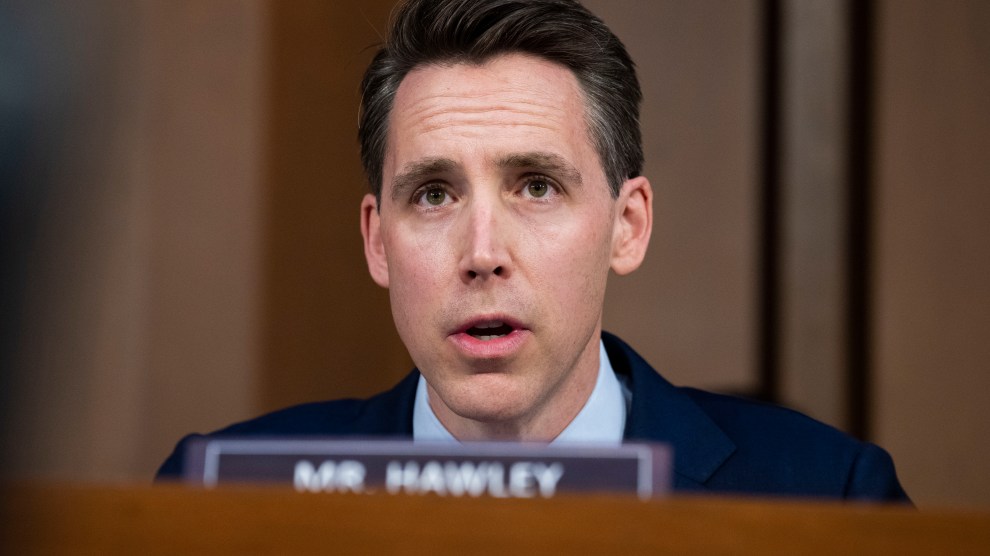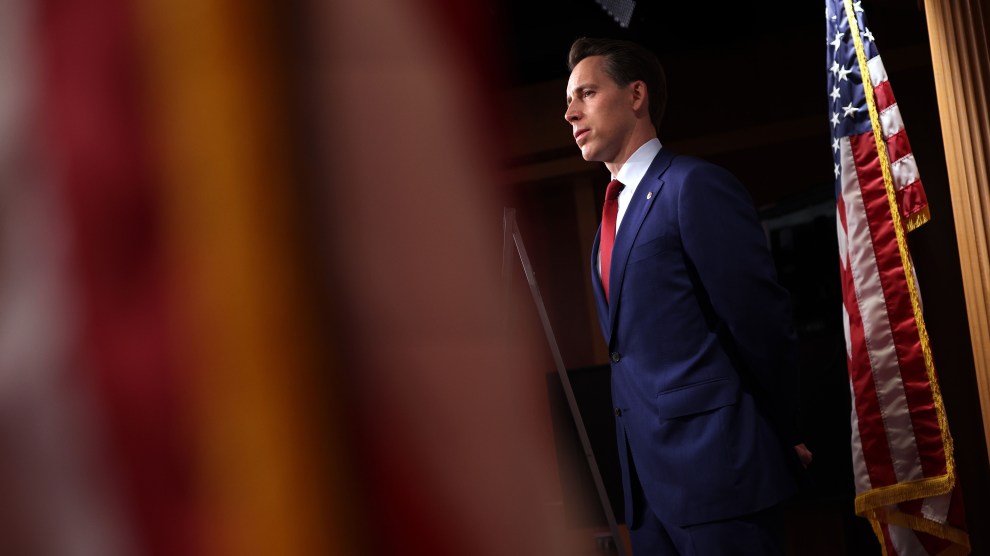
Tom Williams/Getty
At some point between the ’80s and now, leaving children unattended in public became unthinkable. To let children as old as, say, 10 walk by themselves became grounds to investigate parents for neglect. As a child of the late ’90s and early 2000s, I knew latchkey kids existed, but nearly exclusively from the aging 1980s children’s paperbacks in my elementary school’s library. My friends whose parents worked too late to pick them up from school stayed in the building for a child care program or took a bus to the nearby Boys & Girls Club.
Statistics confirm the decline of the latchkey kid that I witnessed and that continues today. A primary reason for the change was the fear that children were constantly on the cusp of being kidnapped, abused, or taken advantage of, and thus could never be left alone.
Paul Renfro, an assistant professor of history at Florida State University, chronicled in his 2020 book Stranger Danger: Family Values, Childhood, and the American Carceral State, how such a notion became widespread in the ’80s and ’90s. Pictures of missing and abducted children were plastered on milk cartons, as media ramped up coverage of random, isolated incidents of children being abducted in ways that it hadn’t before—even as the number of children who were abducted did not substantially increase.
Critics of this moment often blame the media, who did play a part in elevating these concerns—but there’s more to the story. Their coverage played right into the hands of, and was exacerbated by, a reactionary right-wing movement that was eager to notch culture war wins by conflating the so-called “stranger danger” threat to children with pornography, underage drinking, drugs, teen pregnancy, and the like. Ancillary battles on similar moral fronts hastened a harsher “war on drugs,” and the corresponding mass incarceration policies that disproportionately hurt Black America.
Today, the leveraging of unfounded fears that children are in unprecedented danger toward political ends is animated by QAnon and Pizzagate conspiracy theories. While these are generally too absurd for elected politicians to directly endorse—the few that have, like Rep. Marjorie Taylor Greene (R-Ga.) have walked back—Sen. Ted Cruz (R-Texas) and most recently Sen. Josh Hawley (R-Mo.) have tried to tap into the same fear and energy QAnon has harnessed. They want to use it to push a reactionary political project—but without having to say “QAnon” out loud.
During Judge Ketanji Brown Jackson’s Supreme Court nomination hearings, Hawley repeatedly claimed that she had been soft on child pornography offenders, despite being accused, earlier in his own career, of displaying untoward leniency towards sexual abusers as a prosecutor and attorney general. He largely focused on Jackson’s deviations from federal sentencing guidelines in child porn cases, even though judges appointed by Trump have also deviated from the guidelines, which have been broadly and bipartisanly criticized.
In an email interview, Renfro explained the right’s long tradition of hyping up concerns about the nuclear family and children, how Hawley’s attacks on Jackson are just the latest version, and what might make Americans less susceptible to repeated moral panics.
Your book talks about how panics over children have been weaponized to political ends. Can you give an overview of the argument and explain the modern genesis of this?
Moral panics concerning children have a long history in the United States, but my book concentrates on the “stranger danger” scare that erupted in the late 1970s and early 1980s. Fears about the sanctity and stability of the idealized American family—and the child at its heart—were intensifying during this period. As the power and influence of the Religious Right grew in the 1970s, its leaders railed against feminists, sought to curtail reproductive freedom, and smeared gay men as child predators who “must recruit.”
In this context, several high-profile child kidnapping or murder cases stoked fears of a widespread and worsening epidemic. The 1979 Etan Patz abduction in New York City, the 1979–81 Atlanta youth kidnappings and murders, and the 1981 Adam Walsh kidnapping and slaying in South Florida, among others, received tremendous national news coverage, much of which exaggerated the scope and the nature of the child kidnapping threat. On nightly news broadcasts and in print media, bereaved parents, concerned politicians, law enforcement officials, moral entrepreneurs, and others claimed that as many as 50,000 children fell victim to stranger kidnapping annually in the US.
Even though the actual number of stranger kidnappings was and remains somewhere around 100—and children are far more likely to be abducted, abused, or killed by a family member or acquaintance—many everyday Americans were convinced that their families and children were facing a grave and growing threat. The nation was in the throes of a moral panic, the consequences of which would be multifaceted. Parents grew increasingly protective of their children, restricting their movements and demanding stronger and more punitive state responses to the perils of child kidnapping and exploitation. They found an ally in President Ronald Reagan, who targeted, inflated, and often conflated various presumed threats confronting the American family—from “stranger danger” to underage drinking, from adult pornography to child pornography, from drugs to teen pregnancy, from heavy metal to satanic ritual abuse.
Developments in the Reagan era—including the Missing Children and Missing Children Assistance Acts of 1982 and 1984, respectively, as well as the Child Protection Act of 1984, the Child Sexual Abuse and Pornography Act of 1986, and other measures—set the stage for the surfeit of child protection laws enacted on the federal level during the Clinton and Bush II years. It’s important to note, then, that “child protection” and “family values” were (and remain) bipartisan issues. (As Greg Grandin wryly notes, “Clinton was Reagan’s greatest achievement.”) Under Clinton and George W. Bush, the federal government mandated the adoption by states of sex offense registries and community notification protocols. Accordingly, the number of individuals charged with and incarcerated for various sex offenses (some but not all of which involve actual sexual harm)—and the number of people forced to register as “sex offenders”—skyrocketed. Today, nearly one million individuals are listed as “sex offenders” in the US.
And so now Hawley is playing on this tradition in the Senate confirmation hearings. How savvy do you think Hawley is being? Is he just making the calculation that people don’t like children being harmed, or do you think he’s aware of just who he is tapping into and going after?
Hawley probably knows what he’s doing. The moral panic I write about in Stranger Danger never really dissipated, and in moments of national chaos and uncertainty (such as the late 1970s or the 2020s), many Americans look to shore up the nuclear family and preserve childhood “innocence”—both of which have particular racial, class, and spatial connotations. Not unlike Glenn Youngkin (whose successful gubernatorial bid in Virginia last year centered around the slogan, “Parents Matter”), Hawley recognizes that he can mobilize (white) suburban parents by tapping into their fears about child safety and innocence. He and others can reach these audiences by discussing a range of different issues—including critical race theory, gender-affirming care for trans kids, or Ketanji Brown Jackson’s presumed “softness” on “sex offenders.”
How do QAnon and Pizzagate factor into this? Do you think that Hawley is trying to stoke the energy of that community?
These topics enable Hawley and others to gesture toward the QAnon conspiracy theory without explicitly mentioning it. But he’s coming pretty damn close by arguing that Jackson, a Black woman nominated by a Democratic president, is “endanger[ing] our children.” Whose children, exactly? Plus, a quick glance at Hawley’s online store—which features koozies, mugs, and T-shirts emblazoned with the image of Hawley’s infamous fist salute on January 6, 2021—reveals that he’s more than willing to associate himself with QAnon supporters and other extremist elements. And he’s been nodding to Q for quite a long time now; for example, while serving as Missouri attorney general in 2018, Hawley lamented the “human trafficking crisis” and blamed it on the sexual liberationism of the 1960s and 1970s. “The sexual revolution has led to exploitation of women on a scale that we would never have imagined,” he asserted.
Is there a close historical antecedent to what Hawley is doing? Based on what you’ve witnessed in past trends does this represent another step on the bridge of bringing QAnon-styled conspiracies into the conventional political realm?
In many ways, Hawley, Ron DeSantis, Greg Abbott, and others are building on the culture wars of the late twentieth and early twenty-first centuries. Today’s handwringing about critical race theory and “illiberalism” on college campuses recalls the debate over “political correctness” and “the canon” in the 1990s. Further, their antigay and anti-trans politicking is reminiscent of the efforts undertaken in the 1970s and 1980s by Religious Right figures—who depicted gay men as depraved predators who “groomed” or “recruited” children—as well as the campaign against marriage equality, waged by Republicans and Democrats alike in the early to mid-2000s.
But Hawley and others also seem to be laundering certain ideas associated with QAnon. This is a strategy that the organizers of the summer 2020 #SaveTheChildren and #SaveOurChildren rallies undertook, consciously obscuring connections to QAnon through abstract (and virtually unassailable) language concerning child protection and trafficking.
Ted Cruz tried his own version of this in 2020 over a Netflix film. Are politicians just going to take these kinds of shots when they see them?
Until voters or elected officials within the GOP thoroughly rebuke Hawley (and other Q sympathizers like Marjorie Taylor Greene), there’s little reason for him and others to distance themselves from such elements.
There is a conspiratorial tradition of reaction that I think goes beyond “stranger danger”: the myth of the black male’s threat to white women; Red Scare fears of communists infiltrating every level of government; gay men being threats to their communities, etc. Do you think that child sex panics of that kind of genre, or do they run parallel?
As I’ve argued elsewhere, notions of white innocence and victimhood—which oftentimes but not always concentrate on the idealized child and family—are incredibly potent and, indeed, loom over all of the phenomena to which your question refers. Those ideas helped propel the (bipartisan) war on drugs and mass incarceration, the Second Red Scare, the opposition to busing and school desegregation, the global war on terror, and beyond. Moral/sex panics concerning children flow from these powerful ideas and help shape rhetoric and policy on a whole range of issues in US political culture.
A lot of people just hear that kids are being threatened and—even if you show them there’s not a spike and that the biggest threat is inside the home, not out of it—they just don’t care. Is there a way to break the pattern and neutralize the power of these moral panics and conspiracies influencing politics and policy?
This is a tough one. Moral panics thrive off of instability and insecurity, and because the US is so unstable and unequal, Americans are particularly susceptible. But it stands to reason that moral panics might lose their luster if American society became more egalitarian, less hierarchical, less atomized, and less anxious. For instance, ending the (bipartisan) fixation on “family values” might bolster alternative forms of kinship and support—such as a more robust social safety net and communal systems of childrearing and education—which could potentially curb the abuse and exploitation that takes place in the household. Further, we should think very seriously about why the political and media classes continually promulgate wild, baseless ideas to garner votes and generate attention—especially as Americans’ quality of life fails to improve in the twenty-first century. Doing so might force politicians and the chattering classes to change their ways.















